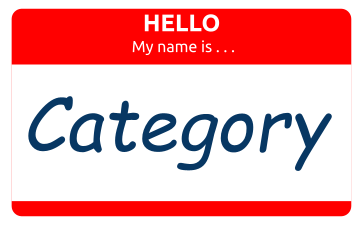If you manage to create a new category and be the first in it, you have a chance to name the category. You can introduce the category name in your marketing literature and PR campaigns.

The guidelines for choosing a category name differ from the guidelines for choosing a brand name. While descriptive brand names are a bad idea, a category name is by nature descriptive.
"Xerox" was a powerful brand name that dominated the "copier" category. The brand name was a blank slate, not descriptive of anything [at least to the average person; see the comments], especially of the product. The category name, on the other hand, was a straightforward description of the product's function.
The main guideline in choosing a category name is to ensure it clearly conveys that the product(s) in it differ significantly from products in existing categories. Such a category name aids in the marketing of your product, as it makes it easier to position it versus the competition.
The guidelines for choosing a category name differ from the guidelines for choosing a brand name. While descriptive brand names are a bad idea, a category name is by nature descriptive.
"Xerox" was a powerful brand name that dominated the "copier" category. The brand name was a blank slate, not descriptive of anything [at least to the average person; see the comments], especially of the product. The category name, on the other hand, was a straightforward description of the product's function.
The main guideline in choosing a category name is to ensure it clearly conveys that the product(s) in it differ significantly from products in existing categories. Such a category name aids in the marketing of your product, as it makes it easier to position it versus the competition.
Comments
And sorry, I dont agree with the nill brand names. This might be needed nowadasys to get trademarks, but it was never needed in earlier days.
Have a coke, have a pepsi?
Bernd
The reknowned marketing guru Al Ries, his daughter Laura Ries, and the well-respected Seth Godin all agree: overly-descriptive or generic brand names are a bad idea. Scientific studies support their position.
If you have any studies or evidence to the contrary, please do share.